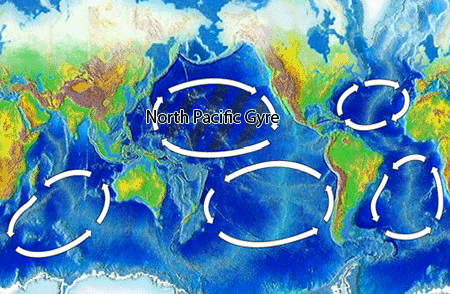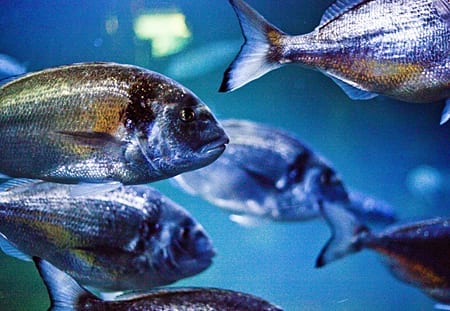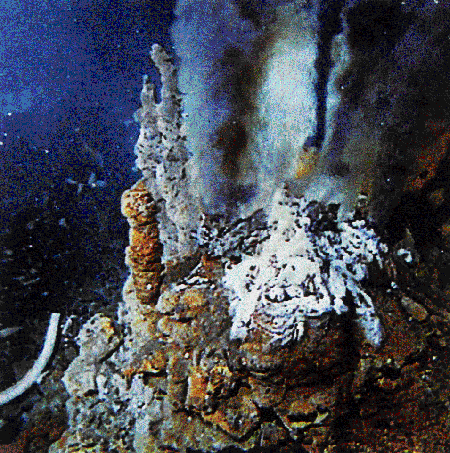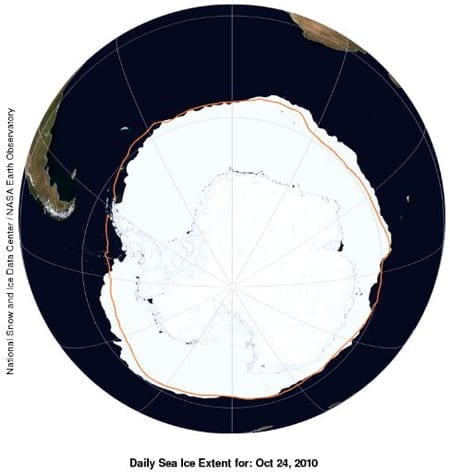By Daniel de la Calle
I just spent five hours flying over the Atlantic and as a tribute to it have decided to list five nuggets of information about our oceans, those two thirds of Earth that we normally see as highways, supermarkets, dumpsters, bounties of riches or playgrounds, but are seldom given the importance they deserve.
1 The image that came to my mind when I first heard about the Great Pacific Garbage Patch was naive, I imagined an accumulation of plastic trash that almost allowed you to walk on water. The truth is more subtle and paradoxically worse.

I knew without knowing about the Pacific Patch from my visits to the island of Kauai. Certain beaches there that have large parts of white and blue plastic “sands”. For some reason that escapes me, could be because plastic is so ubiquitous (every single item in front of me right now has or is plastic), I did not interpret it as evidence of disaster.
In the past few years four more of these crowns of shame have been discovered in the oceans: the Atlantic has two, so does the Pacific, and one the Indic.
More info:
http://summitcountyvoice.com/2010/12/10/new-garbage-gyre-found-in-south-atlantic-ocean/
This is extremely interesting:
http://science.dodlive.mil/2010/11/15/contributing-to-marine-pollution-by-washing-your-face-dispatches-from-antarctica/
Or learn about the 5 Gyres Institute
A video with a plastic pollution model
Maximenko’s Plastic Pollution Growth Model from 5 Gyres on Vimeo.
2 Just like us animals on land or birds in the air, fish migrate when they do not find the proper conditions in an environment. This has always happened in a “natural” fashion and we have benefited from it for thousands of years as dependable sources of food. Now it is beginning to take place in a humanly-induced way and it is hard to believe the outcome will play in our favor. Signs of new fish migrations have been noticed since the early nineties, most likely due to global warming. When ocean acidification increases its impact on for example pteropod or oyster larvae populations I have no doubt that we are going to see more of these migrations and behavioral changes.

Continue reading:
http://lawoklepas.blogspot.com/2010/12/global-warming-leading-to-migration-of.html
3 I spent most of last night awake with jet-lag insomnia, listening to the radio. At 4AM the Spanish National Radio has a program for Spanish speaking commercial fishermen around the world. They talked about piracy in the Indic Ocean, about the recent discovery of deep sea coral reefs and about the increasing dangers of working under the current fish scarcity and global economic crisis, cutting corners and taking risks. They also mentioned that the Mediterranean rose 20 centimeters over the XXth century and is expected to raise another 35 during this one. Almost 2 feet in 200 years, not much in the cliff coast east of my hometown, but transforming and destructive beyond recognition along the salt water lagoons and low waters of Valencia and Venice.
4 I once heard that the biggest gold mine is in our world’s oceans, where over one trillion US Dollars worth of gold diluted lies diluted, ready to be filtered if we only had the expertise and the patience. I was searching for this information when I found out that real gold mining in the oceans is actually about to begin, with China leading the way.
http://www.independent.co.uk/environment/nature/deepsea-mining-adds-to-fears-of-marine-pollution-2016292.html
Mining at great depths and around hydrothermal vents, “black chimeney-like structures which shelter their own ecosystems of little-known creatures, while emitting a cloud of hot, black material containing high levels of sulphur-bearing minerals, or sulfides” is a thing of wonder and fear.

As always, I marvel at the techniques and engineering that goes into industrial and mining activities and already fear the consequences regular activity and sporadic accidents will have for the environment. if our cautiousness was only half as great as our ambition.
5 THIS University of Florida research claims to have solved “the mystery of where old carbon was stored during the last glacial period. It turns out it ended up in the icy waters of the Southern Ocean near Antarctica.”

I am not sure I understood the article right, would this mean that the current melting of ice in Antarctica would also release “old carbon” that is stored there, sort of the way methane is being released in the Northern Hemisphere? If you are a scientist reading this, please clarify with a comment. Another question I have on this regard is: if warmer water will send CO2 into the atmosphere, will CO2 just revolve now in an endless cycle of air to water and back?


